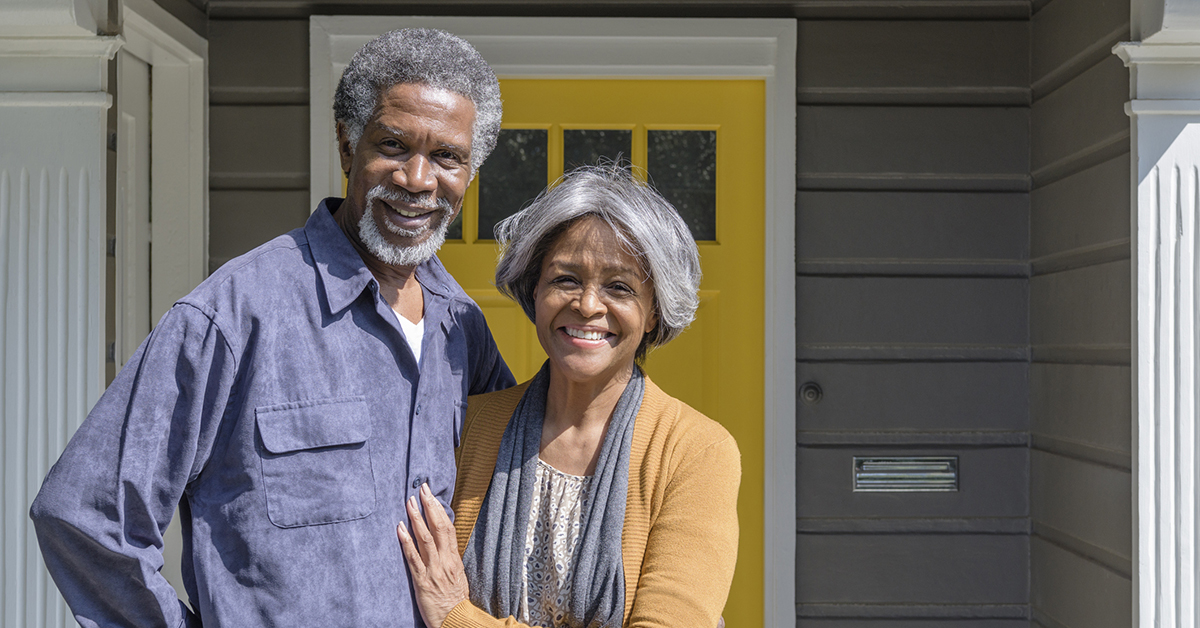Home Buying By Older Americans Picks Up Steam

Baby Boomers were a rebellious generation.
They grew their hair long. They fought for social equality. And now, they refuse to be “old.”
A clarification: They refuse to be old based on the standards set by previous societal norms.
In other words, previous generations, when they reached retirement age, were more likely to settle into a retirement home, or to a retirement community to live out their days peacefully.
And while there are “R” words that Boomers don’t mind these days – like rest, relaxation and recreation – retirement is a bit taboo, especially when used as an adjective referring to their living situation rather than as a noun to describe their state of being.
That’s because Baby Boomers still want to be active, despite primarily being in their 60s or early 70s. They aren’t interested in communal meals watching the Game Show Network for hours on end.
No, they’d much rather continue their counterculture approach to living – and turn retirement on its ear – concentrating more on things like their garden, an active outdoor lifestyle and remaining an integral part of their neighborhood and community.
It’s why we are seeing a noticeable upswing in home buying among older Americans.
'We are seeing a noticeable upswing in home buying among older Americans.'Click To TweetOlder Americans Now Make Up a Quarter of Housing Market
“We found that 14% of the home buying market in 2016 was from ‘Older Boomers’ and an additional 8% of the market was from the ‘Silent Generation,’” said Jessica Lautz, managing director of survey research and communication for the National Association of REALTORS® (NAR) Research Division. “So they are an active population purchasing homes today.”
Lautz said that “Older Boomers” were identified as homebuyers between the ages of 62 and 70 and the “Silent Generation” consisted of homebuyers between the ages of 71 and 91.
Some people are surprised when they learn that a quarter of the home buying market is made up of retirees or those close to retirement age. Some may find that a quarter of the home buying market being made up of retirees or those close to retirement age to be a surprisingly large percentage. But, as Bob Dylan sang to these same folks as impressionable teenagers more than a half century ago – the times, they are a-changing.
“Age in community is not ‘old’ the way we used to be ‘old’,” said Linda Lugo, the 2016 president of the New York State Association of REALTORS®. “You are not seeing the traditional, mature owner wanting to go into what is considered a retirement community. They still want to be part of the [regular] community.”
Lautz added that according to NAR research, the primary reasons older Americans move are retirement (moving to warmer climates), downsizing or wanting to move closer to friends and family. However, there are trends that again show this generation of retirees is unique.
“Today’s retirees are different than in the past,” Lautz said. “Warmer climates are always going to be popular, but we don’t see them downsizing as much as they did before. As recently as 2004, retirees would downsize by about 500 square feet on average, now we are seeing the average down to 100 square feet, meaning they really aren’t downsizing much, if at all.”
And despite the fact that they have smaller household incomes, this is a financially confident group who hold about $8 trillion in home equity – nearly two-thirds of the equity of all American homeowners.
“Their wealth sneaks up on them,” said Boyd Campbell of the Maryland Association of REALTORS®. “They buy a home in the right neighborhood and the right ZIP Code and the home they bought for $100,000 is now worth $400,000.”
Older Americans Are Heading North
And there is a bit of a reverse migration going on, too. There has been a recent trend of seniors leaving traditional retirement states like Florida, Texas, California and Arizona, for states which actually have winters – like Illinois, Michigan, New York and New Jersey.
With the real estate market rebounding in those warmer states, older Americans can now sell their homes there for a significant profit, giving them the freedom to once again relocate closer to their loved ones.
But this trend is also rooted in policy – and although they may have at one time in their lives been a bit anti-establishment, Baby Boomers are not foolish, and recognize where their best interests lie.
In some of these states – specifically in New York and New Jersey – Medicaid expansion, for example, means healthcare is more affordable for some people.
Sometimes though, existing policies meant to assist older homeowners – such as reverse mortgages – require close attention.
“Reverse mortgages can indeed be very beneficial to mature homebuyers,” said Iona Harrison, a member of the Maryland Association of REALTORS®. “But care must be exercised to ensure that the mature homebuyer makes an informed decision and truly understands the consequences of the reverse mortgage.”
Reverse mortgages have been rapidly increasing in number in the past 15 years, but they also come with criticism for being too confusing, costly and misleading.
Still, far fewer Older Boomers (68%) and Silent Generation (58%) homebuyers are taking out mortgages than Millennials (98%) and Gen-Xers (96%).
This means older homebuyers are a greater force in the market than many may realize and they actually could have an unintentionally adverse effect on younger homebuyers, especially those trying to buy their first home.
Time to Focus on Affordable Housing
Taxes on real estate are not the answer. Sign the petition calling on Congress to address our country’s housing shortage.





